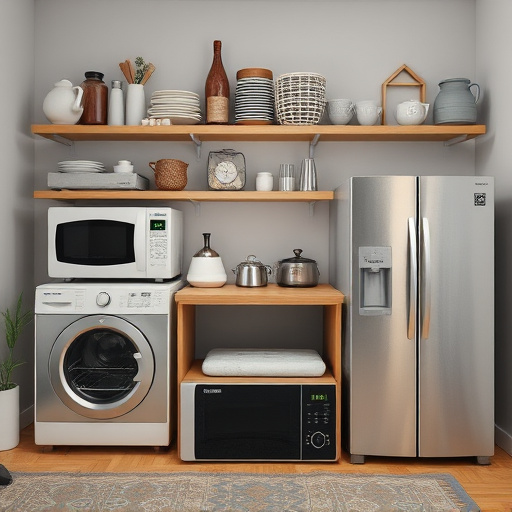Drum bearings in major appliances like washing machines are critical for smooth operations; they wear out over time, causing increased spin cycle noise. Regular maintenance and timely replacement are essential to prevent disruptions. Loud spin noises signal a problem with the drum bearing, which can be easily replaced as a DIY project.
Tired of annoying spin noises that disrupt your laundry routine? It might be time to consider a washing machine drum bearing replacement. These bearings play a crucial role in keeping your washer’s drum smoothly rotating, reducing friction and wear. If you’re hearing loud, persistent sounds during the spin cycle, it could indicate a damaged bearing. This article guides you through understanding drum bearings, identifying issues, and offers a step-by-step process for replacing them on major appliances, ensuring a quieter wash experience.
- Understanding Washing Machine Drum Bearings and Their Function
- Identifying and Diagnosing Loud Spin Noises
- Step-by-Step Guide to Replacing Your Washing Machine Drum Bearing
Understanding Washing Machine Drum Bearings and Their Function

Washing machine drum bearings play a crucial role in ensuring smooth and quiet operations of major appliances. These bearings support the rotating drum, allowing it to turn smoothly during the wash cycle. Over time, however, these bearings can wear out or become damaged due to regular use, leading to various issues like increased noise levels. When the drum bearing starts to show signs of wear, it can cause a loud spinning noise during the spin cycle, which is often unpleasant and disruptive for homeowners.
Regular maintenance and timely replacement of washing machine drum bearings are essential to prevent these problems. By addressing worn-out bearings promptly, users can enjoy quieter and more efficient laundry operations. Many modern major appliances come equipped with durable drum bearings designed to last longer, but even the best-maintained machines may require replacements over their lifespan.
Identifying and Diagnosing Loud Spin Noises

Loud spin noises coming from your washing machine drum can be a frustrating and disruptive issue. Identifying the source is the first step towards finding a solution. Start by observing the machine during operation—pay close attention to any unusual sounds, vibrations, or behaviors. If the noise occurs primarily during the spin cycle, it’s likely stemming from the drum bearing, which supports the rotating drum.
Over time, these bearings can wear out, resulting in excessive friction and loud noises. Major appliances like washing machines are designed to withstand significant use, but regular wear and tear can take a toll on intricate parts such as drum bearings. If the noise is accompanied by vibrations or if the machine seems to wobble during operation, these could also be indicators of damaged or worn-out bearings.
Step-by-Step Guide to Replacing Your Washing Machine Drum Bearing

Replacing your washing machine drum bearing is a relatively straightforward process that can significantly reduce loud spin noises coming from your appliance. Here’s a step-by-step guide to help you navigate this task, ensuring your major appliances run smoothly again.
First, unplug your washing machine and turn off the water supply valves connected to it. Then, carefully remove the top or lid of the washer to access the drum. Identify the drum bearing located on one or both sides of the drum. Loosen and remove any screws holding the old bearing in place using a suitable screwdriver. Clean the area thoroughly to ensure no debris remains. Insert the new bearing, ensuring it’s correctly aligned, and tighten the screws securely. Reassemble the washer, reconnecting the water valves and plugging in the machine. Test the wash cycle to confirm the noise has been eliminated.
Replacing your washing machine drum bearing is a straightforward process that can significantly reduce loud spin noises, enhancing the overall performance and longevity of your major appliances. By following the step-by-step guide provided, you can tackle this common issue effectively. Remember, proper maintenance and timely repairs are key to keeping your home’s laundry systems running smoothly.
